Article Note: This article “How to Use Visual Storytelling to Build a Successful Brand?” was first published on June 27, 2016. We last updated this article with fresh information on October 3, 2023.
Are you interested in setting your brand apart from the competition? Then you need to design your visuals in such a way that they tell a story to your target audience.
In place of designing the photos, videos, and graphics simply to add visual aids to your content, you need to include a story to make sure it conveys an appropriate message to your target audiences. In this blog, we will explore the hidden power of visual storytelling in graphic design and how it can ease the approach of different businesses to their target audiences.
There is a crucial use of Graphic Designs for logo design companies to create attractive and unique logo designs for your brands and businesses. The objective is to provide needful advice in creating visuals and support people who are looking for the power of visual storytelling. In this blog, we will discover all the important factors of visuals and communicate the ideas more effectively. So, let’s dive right into “The Strength of Visual Storytelling”.
Why is visual storytelling important?
Before moving ahead in-depth, it’s a good thought to understand and get familiarized with some key visual storytelling rules to ensure you’re making efforts in the right direction on your graphics designing and clone app development for going forward.
Nowadays, there are several promotional videos or photos designed using visuals. They convey hidden messages to their target audiences. Before you go to design visual stories in your next projects, let’s go grab some basic rules of being a good visual storyteller.
Related: How to Edit Videos Like A Pro to Boost Video ROI?
What exactly is visual storytelling?
Visual storytelling is a process of adding visual aids to your graphics whether it’s an infographic, a presentation, an animated graphic, or even just an image to convey a story. The importance of visual storytelling is that it can help difficult subjects become easier to understand. Graphic Design is an essential component of marketing and branding. It supports conveying a message effectively and grabs the attention of the audience.
Visual Storytelling is an art. The story can be about anything, from a brand’s history to a product’s benefits. The main objective of visual storytelling is to establish an emotional connection with the audience and communicate a message that they can remember and connect with.
Storytelling – It Engages and Persuades

The Aflac Duck; the Geico Gecko; Flo from Progressive. It’s difficult not to know who these characters are. Not only are they all over TV, but they have their own Facebook pages. They are the “mascots” of three major U.S. insurance companies, and, while consumers tend to ignore most ads, they tend to stop and watch these. Why? Because every ad is a story of the adventures and exploits of these three.
Now these three mascots represent a pretty boring industry – insurance. It’s hard to get consumers excited about insurance, and marketing it has always been a challenge. Traditional marketing has always focused on coverage and price and other boring stuff. But marketers discovered that entertaining their target audiences with storytelling engaged them and persuaded them.
Storytelling is not new. These three companies were not the first to entertain audiences with stories. Brands have recognized the power of this strategy for years and, once the Internet opened far greater ability to “reach” a huge audience, storytelling has exploded and taken on many forms. Whatever form it takes, however, there are four ways in which stories can engage and persuade.
1. A Company Can Portray Is Personality
Brands have personalities. Dollar Shave Club, a relatively young company that sells subscription razor deliveries, finds the humor factors in men and shaving. Its site is filled with entertainment, down to its blog, titled “Bathroom Minutes.” The opening video on its homepage tells the story of the company and provides and explanation of the value in having a monthly supply of razors delivered to a customer’s mailbox. It’s hysterical.
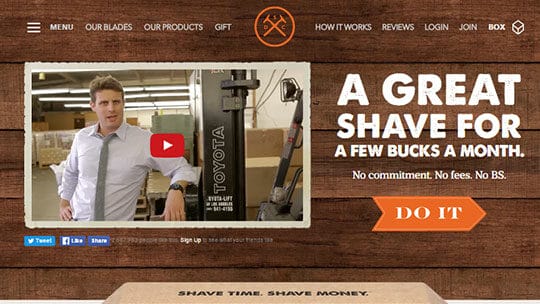
At the other end of the spectrum is Headbands of Hope, another young company that supports children’s cancer research and donates a headband to a little girl with cancer for every headband that a customer purchases. The stories on it site and blog are poignant ones about kids battling this horrible disease – the brand personality is one of love, care, and hope.

Letting your brand personality shine through stories is powerful, as these two companies show. Both have grown rapidly over the past three years of operation – and that growth is greatly a result of their brands’ stories.
2. You Can Make Your Brand Stand Out as Unique
It’s a competitive world, and the amount of bombardment from digital advertising has many on “overload.” They don’t like pop-ups; they don’t like ads saturating their social media pages and their emails, and they especially don’t like hard sells. And they especially don’t trust brands that focus more on selling a product than developing a relationship. Here’s where storytelling can set you apart from your competition. Use stories to put your brand front and center and demonstrate your care for your customers. Indirectly, you are persuading them to buy from you, and you are garnering lots of goodwill.
ModCloth is a great example of getting its brand to stand out through storytelling. It does not have long sagas – its stories revolve around its customers who submit photos of themselves wearing clothing they have purchased from the company. The picture and a few words of explanation comprise the entire story, and it works!
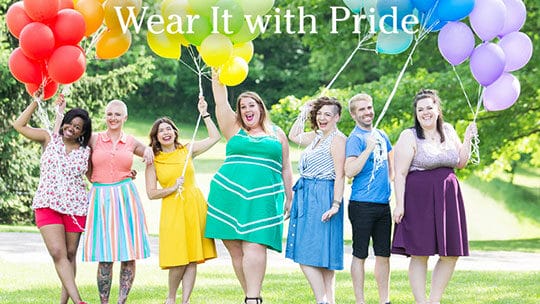
You don’t want stories to be over-complicated, and sometimes just a visual and a short phrase will do perfectly.
3. Stories Can Generate Lots of Emotional Appeal
Telling stories that strike an emotional chord are powerful. If you do this, though, base them on real stories. Know which emotions you are going for with your stories – humor, inspiration, joy, shock, and even anger can sometimes work. Generally, though, audiences like stories that are at least somewhat uplifting, so stick with positive emotions if possible. Even though Headbands of Hope tells stories of kids with cancer, and that has a huge emotional response, it tries to inject hope with each one.
One word of caution here: Be genuine and be honest. Audiences can “smell” a fake a mile away. And when you are telling a story that is real, you’ll tell it better, the ad your audience will engage more.
Recently, there was a YouTube sensation about a silly Chewbacca mask that a woman had purchased for herself for her birthday. She bought the mask at Kohl’s Department store. The video was so funny that it immediately went viral. It was real and it was genuine, told by the woman in her own voice. She was not working for Kohl’s in any way, but that story spread Kohl’s brand indirectly to millions of viewers.
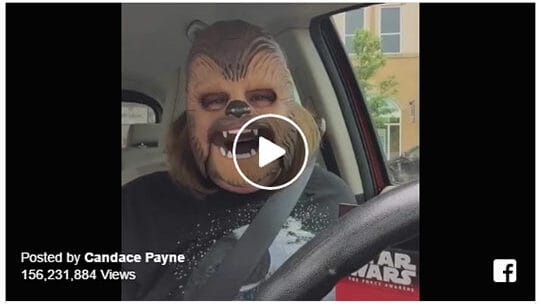
Notice the number of views.
4. Stories Can Have Ongoing Plots
You don’t have to tell the whole story in one “sitting.” When the Aflac Duck broke his wing, a number of commercials revolved around his process of healing – showing him in traction, then in physical therapy, etc. And since Aflac is a company that sells supplemental hospitalization insurance, the scenarios were perfect for brand spreading.
Even if you don’t have a mascot with a broken wing, you can continue an episodic story over several weeks. Jack Daniels had a recent marketing strategy of asking its visitors and regular viewers to submit their funniest bar stories. It was a big hit, and people kept accessing the website for the regularly published stories.

We are “Wired” for Stories
The average Internet user is subjected to over 100,000 words a day. Cutting through all of that can only be accomplished by engaging content. That content means that marketers have the writing skills to tell a good story and the understanding that there must be visuals to accompany it. The brain processes visuals about 60 times faster than words, as shown here by a Fast Company infographic:
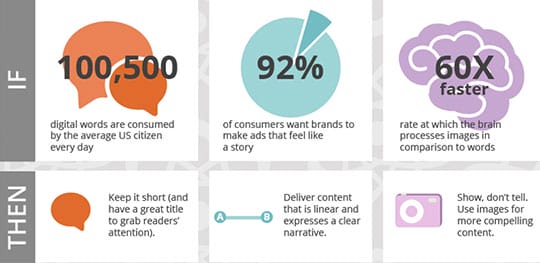
And speaking of or brains, the infographic below, also published by Fast Company, explains what happens to our brains when we are presented with stories.

When four parts of the brain are activated, engagement is strong. This is, of course, why storytelling is such a powerful medium for marketing.
So, how can you use storytelling in your marketing efforts? Perhaps these examples with giving you some good ideas – And maybe you are already using a lot of storytelling with some great results. We’d love to hear about it in the comments below.
Types of Storytelling
Now that we have already understood the definition of visual storytelling, let’s know more about its various types. Visual storytelling is a powerful tool that has the potential to establish a good connection with the target audiences and communicate your thoughts.
While designing the content, here are the four types of visual narratives which are as follows:
- Photography.
- Video Production.
- Animation.
- Graphic Designing.
All these are different sorts of visual narratives that use a different approach of communicating a story or message in such a way, that only words cannot be able to do.
What is the Role of Visual Storytelling in Graphic Designs?
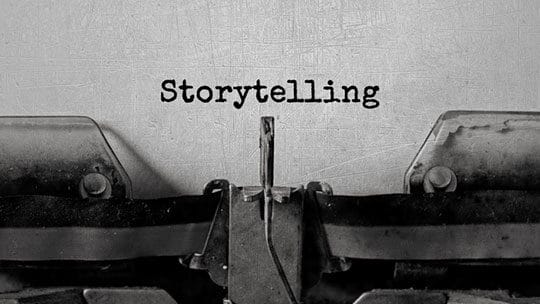
Have you ever had a chance to know the impact of a simple image on someone? A single image has the potential to evoke a powerful emotion in the person. Visual storytelling has the power to connect with the target audiences on an emotional level.
1. Increase Engagement
The main goal of Visual Storytelling is to support the engagement with the target audiences. When a story is conveyed through images and visuals, the impact of the story increases and can be easily memorable. The reason behind this is that our brain processes images 60,000 times faster than text.
2. Enhance Brand Activeness
Visual storytelling can support to improve brand attentiveness by developing an exclusive brand uniqueness that sets a business apart from the competition. It can benefit to form brand acknowledgment and mark a business as more extraordinary to the viewers.
3. Conveys Complex Information
Visuals are the easiest approach to convey difficult statistics and information. The visuals simplify the difficult ideas and make them easy to understand for the audience. For example: Infographics can communicate statistical data and information in an easy format through visuals.
4. Build Emotional Connects
Based on several scientific research, it is very clear that the brain processes image-related information faster than normal textual data. The visuals in your content convey and establish an emotional connection between the businesses and their target audiences.
5. Brand Uniqueness
The most important role of visuals is that they provide uniqueness and set you apart from the competition market. You will get a unique brand identity with the usage of visuals and art in place of tons of words in your work.
See also: How to Make Good Videos for YouTube? Simple Tips for Beginners!
Benefits of Visual Storytelling in Graphic Designs and Marketing
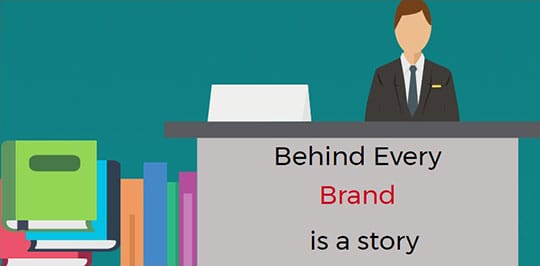
Visual Storytelling has become an integrated source for web design and content marketing. The main purpose of storytelling is to evoke emotions, connect the brand and the customers, and explain complex concepts very effectively and easily.
There are several benefits to using visual narratives to design a meaningful connection with our audience.
- Engagement with customers: Stimulate curiosity about the brand or products being presented.
- Emotional: Establishes the connection with audiences on an emotional level. This promotes brand loyalty to the product.
- Unique, captivating: Attracts the viewer’s more than words alone. It inspires unique ideas and thoughts in the viewers.
Color Psychology
Colors are an integral part of visual storytelling. It has the potential to evoke an emotional connection with the audience.
Let’s explore how different can impact and how people perceive a specific image or message. Different colors have different meanings. For example, Red is associated with energy, strength, passion, and excitement. White and Blues denote trustworthiness and dependability. Yellow denotes optimism and cheerfulness. Green stands for health and growth, purple conveys luxury-the list goes on.
It’s also crucial to understand what kind of effect various shades have when paired. When two contrasting colors come together, for example: Red and Green, they must stand out perfectly.
Power of Images
Images are more powerful when it comes to visual storytelling. They can develop an emotional connection with the viewer and empathize or even compel positive actions as well. Images can also give a direction to think differently with a new perspective. If you select your colors, images, and visuals carefully, it becomes more memorable and compelling for your viewers.
When you are designing graphics for any digital platform, there are several approaches to use differently within your visual storytelling efforts.
Use of Typography
Typography is a powerful tool. You can create a robust wisdom of grading and determination in your graphics by wisely selecting fonts, prints, sizes, weights, and colors. When you implement typography in visual storytelling, the objective should be to ensure the text has an integral role in conveying the message. The right and appropriate font choice can support your story and content without distracting from other elements such as videos and images.
3 Storytelling Tips for Entrepreneur Brand Building

We know that in building a brand, a product/service will be doing itself a favor. Only those brands, which have integrity and honesty, will survive in the rat race for customer eyeballs. In such a scenario, how does one create stories, which help increase sales? Creating stories about a brand or a service is a good ruse to increase sales. However, one needs to know from where to get material to narrate these stories. This article talks about three storytelling tips, which will stand you in good stead for entrepreneur brand building.
Here, it is important to mention that the tips given are not exhaustive. There are many tips and tricks online to narrate stories for creating a brand name building. Remember, it matters how one pitch any idea to a potential investor or business partner. Putting forward your ideas to show that your company is different will go a long way toward improving customer perception about your brand.
The success stories of Jeff Bezos and Elon Musk
Look at the stories of Jeff Bezos and Elon Musk. Both of them wanted to do things differently and each believed in perseverance. A budding entrepreneur must always remember that the touch of something personal in his professional life can take him a long way. The success stories of Jeff Bezos and Elon Musk are cases in point. These people are ideals everyone holds in high esteem. Their principles should be imbibed in order to get success. They owe their success to the numerous stories they created to build their brand. This section will give you some tips on how to tell stories to build your entrepreneur brand.
Why did you start your own company? This ‘why’ is very important? You need to be able to explain the reason why you decided to start your own company. Your platform needs to propagate the message that your start-up or company is in alignment with your beliefs. This must be the backdrop of your success story. Create a strong, why, which will create emotional upheaval in your audience when they hear your brand stories. This turmoil should make them want to create companies themselves. Such should be the impact of your story on them. Creating a strong story about the reason for starting your company will go a long way in creating your vision and mission.
You need to show your audiences why your products and services are boons to human existence. If you can justify this in your story, your tale will touch many hearts. It is easier to build a strong customer base than a powerful brand. The creation of a powerful brand happens on the back of a strong story. Work out ways to captivate your audience with your story. The 3-storytelling tips to build a brand are as follows:
1. Infuse Personal Elements into Your Story
Infuse personal elements to your story so that your audiences are touched. Try to appeal to the emotions of your audience. Every story that you tell your customer to sell your product/service must create a space in his heart. Try to tug at his heartstrings as you narrate your story, to sell your offering. Try to appeal to his empathetic self.
2. Does Your Company Care for Society?
Try to connect the motto and logo of your company to the essence of life. Show how your efforts are helping society solve its problems. Explain through your social media posts or your advertisements how society is being benefitted by the work done by you in the social sphere. Show how your company is also active on the social front as much as it is on the business front. Show that your company cares for society and how your profits are going towards charitable causes.
3. Do Not Edit Your Story, Narrate It as It Has Happened
Do not try to trim the instances when you had to face hardships when you narrate your story to your audience. Try to create a realistic story, which can evoke emotions in your audience. This is because emotions will open their purse strings. Generally, stories about hardships endured and problems overcome carry a lot of weight with customers. More so if it is making a difference to society. Brag about your social contributions towards society. This will go a long way towards creating a place in your customer’s heart and that will compel them to loosen their purse strings.
How to Incorporate Visual Storytelling into Your Digital Marketing Strategy?

Stories are at the center of any human experience and, as such, businesses need to master the art of storytelling to connect with their audience properly. Visual content, in particular, is what makes a brand memorable and can help them reach a much wider audience by evoking a particular set of emotions. Let’s see how you can incorporate visual storytelling into your digital marketing strategy.
1. Know Your Audience
There are many kinds of personalities that animate your audience, but usually, you can notice common patterns that unite them into a community. These patterns could be related to demographics, age, gender, hobbies, professional careers, or personal preferences for music, art, movies and other topics.
However, it’s almost impossible to identify them with just a simple glance. You need to collect as many data as you can about your existing customers. Start with the details your website registers every day. Your analytics software should be able to tell you where your clients are coming from, what keywords they use on your site, and for how long they stay. Based on this information, you can understand what is the key element that urges people to find your product or service.
Furthermore, you can collect more of it from social platforms. You can visit the profiles of your customers and collect their demographics, job positions, and personal interests. Once acquiring all the details you can about your audience, organize them in a spreadsheet.
At this point, you will be able to notice the common patterns more easily. Use them to create a character description with specific boxes to fill in, such as age, gender, salary, location, education, family, life goals, and values. The result will become your marketing persona.
Eventually, this fictional person will represent your entire audience. It’s an important discovery for your brand. Afterward, you will be able to create digital marketing strategies that address the exact needs and expectations of your target public. The advertising team will design each campaign with the audience as a whole in mind. There will be no more room left for guesses and assumptions. The visual storytelling will aim directly at the sensitive topics for your audience.
2. Keep Track of Cultural Relevancy
However, the marketing persona relies only on data, whereas the global population pulsates with cultural identities, values, and traditions. These core attributes are different from community to community, and they have personal beliefs which cannot be registered as data.
Each generation has its own battles to fight, and the Millennial age is no difference. Today’s social interactions are mostly happening around gender equality, environmental protection, and the other main topics. But other cultures and communities might define your audience. It is an important first step to understanding what kind of values your audience adopted. Afterward, let these values guide you through the process of visual storytelling creation.
This is why some of the most powerful international brands thrive in certain countries and fail in others. Despite their efforts to bridge linguistic gaps and adapt the marketing strategy to a new culture, companies like eBay, Google or Groupon have yet a long way to go to obtain market monopoly outside U.S. and Europe.
An excellent example of incorporating quality visual storytelling into a digital marketing strategy while keeping it culturally relevant is the new Barbie collection. The beloved dolls took a stand for modern values, as the new models promote happy, successful women of all shapes and cultures.
3. Maintain a Visual Theme
A powerful campaign should have the support of many visual elements. The key to success, though, is to empower all the images and videos to send a universal message. By the end of the campaign, the target audience should correlate the message with your brand very easily. Each piece of content should add its own valuable contribution to the creation of the story that your marketing campaigns support.
Even though a disruptive experience can be very attractive because it can force the viewers out of their comfort zone and propel them into an unforgettable moment, its impact may damage the quality of your marketing efforts. In time, clients might get confused about the message you want to sell and the authority of your brand might be put in danger.
So, it is best to stick with the same theme across all visual content. Keep the same color palette and characters for the entire digital marketing campaign, and the consumers will get more familiar with your brand.
4. Explore a Unique Angle
This is the part when the marketing team works its magic. There are many techniques out there based on real-time research, and their creators brought undeniable proof that they work. However, visual storytelling should enjoy the element of surprise when facing the public’s expectations.
It is time to think outside the box and explore a new angle for your next digital marketing strategy. This original approach might be related to an inside experience employees are familiar with, whereas the clients are not. Or your upcoming visual storytelling might deliver a new image of your product seen by the wondrous eyes of a child. There are numerous opportunities to create something that stands our and is outside of the norm.
5. Think Viral
When preparing your next visual project, don’t settle with regular targets in mind and think big. The viral nature is yet unknown for the experts, but we know one thing for certain. People are willing to share a piece of content if it creates an enormous emotional impact.
However, even though people react better to dramatic visuals, negative feelings don’t create the viral effect. The reason for this is that people want to share moments of happiness and hope with their friends.
Viral content also means small bits of information. The fewer elements you use to build your story, the more receptive the public will be. That’s because your story shouldn’t overwhelm the viewer with information. Instead, it should send one awakening bullet in their heart or mind.
All in all, visual storytelling is there to say 1,000 words per second about your brand. Now you can use your next digital marketing strategy to build an impactful case that speaks volumes about your product without saying a word.
Tools to Use to Design Your Visual Storytelling Ideas

Irrespective of visual storytelling, the use of appropriate design tools makes a huge impact on the overall look of any famous brand logo. To develop the right and positive emotion and connection with your audience, it is important to gain attention quickly and effectively. Here are a few favorite design tools that can be used when designing visuals.
1. Canva
Canva is a powerful tool that is easy to use for creating designs and documents for your company. It can be easily used to design images for your social media platforms like Facebook, Instagram, Twitter, and Pinterest.
2. Visme
Visme is a free online tool for creating infographics, eBooks, presentations, reports, and graphics for web content. The content you post on the websites can be private, public, or password protected.
There are several fonts, icons, and millions of free images available that can be easily available on these platforms.
3. Pixlr
Pixlr is an online tool, especially for photo editing. There is the Pixlr Editor instrument, which is like Photoshop, in that it lets your effort in covers and numerical form operate photos. The big alteration with Photoshop, however, is that Pixlr is unrestricted, and exists in the cloud.
4. Venngage
Venngage benefits trademarks proceeds their information and evidence and tries it into spectacular and inclusive graphs. They’re the finest for infographics, micrographics, and other statistics instead of conceptions. The click-and-drag device benefits you effortlessly create data-driven conceptions in 3 simple phases: select your pattern, introduce your information, and modify your enterprise.
5. WeVideo
WeVideo is a cloud-based video editor tool that permits several users to collaborate on a single project. It grants you evolutions, green screens, and fast-and slow-motion choices. It is very easy to add various features that you need in your video. You can upload directly to different websites through this tool.
Related: 12 Tips for Creating a Corporate Video that Amazes Customers.
Conclusion

I hope with this blog you understand the power of visuals to create emotions and establish a connection with your audiences. Visuals can be particularly used to tell stories that connect audiences emotionally, making your audience remember you for a long time.
By using the right tools for your project, understanding how to best implement the visuals effectively for different projects, and ensuring accessibility across all platforms. These tools help you to stand out from the crowd, away from the competition. Creating a unique and meaningful audience connection through visual storytelling demands time and hard work, however, when completed correctly, it brings amazing impressions on the audience for a long time.



